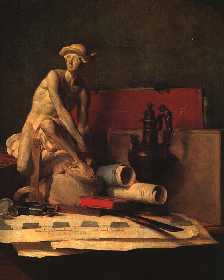Aspects of Neo-Classicism and the Enlightenment (ca.
1630-1780)
|
 |
- Stress on reason and the scientific method.
- A belief in the perfection of human nature and society; universally valid
principles of nature and society are discoverable
- Even faith is rational; God is reasonable and obeys accepted rational standards.
(As a result, this leads many to discount or disbelieve entirely any emphasis on the
supernatural)
- A reliance on models of classical Greece and Rome (e.g. the three unities)
- Reverence for order and accepted rules.
- Stress on good taste, decorum, unity, harmony, proportion, and grace in art.
Art’s purpose is "to teach" and "to delight."
- Stress on public life, the role of tradition, and sociability which stress codes of
manners and networks of dependency.
- Traditional hierarchical relationships are (slowly) giving way to republican and
mercantile models of government and economics.
- Distrust of invention and extreme displays of emotion, an interest in sentiment and
sublimity. The comic is intended to mock lapses in these ideals.
|
[ Baroque ] [ Enlightenment ] [ Romanticism ] [ Realism/Naturalism ] [ Symbolism ] [ Modernism ] [ Postmodernism ]
|
